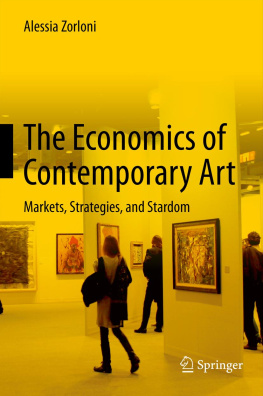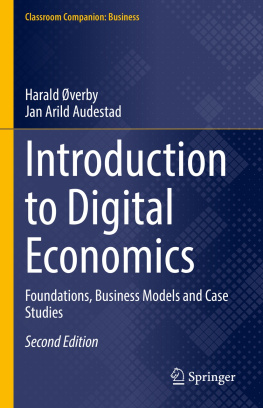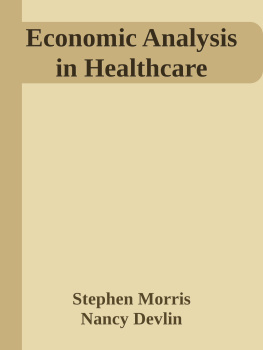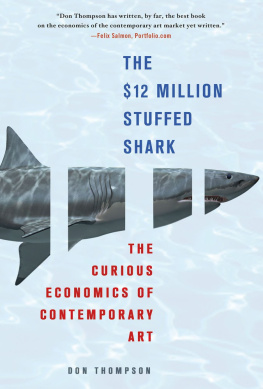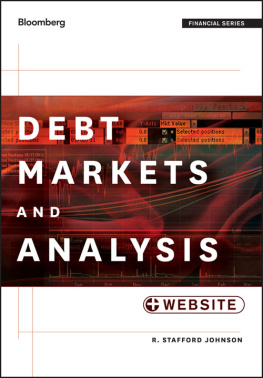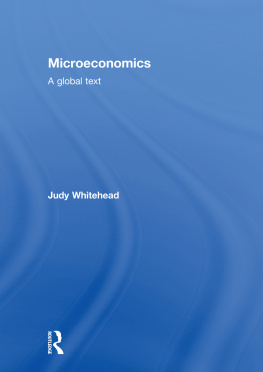Alessia Zorloni The Economics of Contemporary Art 2013 Markets, Strategies and Stardom 10.1007/978-3-642-32405-5_1 Springer-Verlag Berlin Heidelberg 2013
1. The Economics of Creativity Between Culture, Innovation, and Competitiveness
Abstract
This chapter provides a review of the literature on art economics and in particular, the economics of contemporary art. After the analysis of creativity, as one of the main inputs of cultural production, this chapter focuses upon the characteristics of the creative economy, highlighting the relationship between culture, innovation and competitiveness in a given country.
1.1 When Art Met Economics
The idea of linking the themes of art and economics has recent roots. When these issues are debated together, we usually name the discussion art economics: a fascinating notion for some, a blasphemous one for others, depending on whether or not you believe that economic value has anything to do with artistic value. According to Candela and Castellani (
If art is intuition, this does not mean that it is devoid of rationality, or that it does not apply the rational method in its quest; just think, for instance, of the geometric abstractionism of Piet Mondrian, the pointillism of George Seurat, or the Optical Art of Victor Vasarely (who used ophthalmologic scientific research and visual perception to give prominence to his own art forms), or even M.C. Eschers applications of science, which use the calculation capability of computers to produce beauty through fractals. Furthermore, pace the surrealists who have repeatedly declared that only irrationality can create art, rationality has become a constitutive element of contemporary trends from Dadaism to the intellectual provocations of Piero Manzoni (as the renowned Merda dartista ), and up to the movement named Conceptualism which privileges mental processes over technical production.
The economics of art consists in both theoretical and applied contributions, stemming from the history of economic thought and from studies by art experts.
The themes that traditionally compose art economics cover many aspects of culture and can be described by using the well-known distinction between:
Visual arts : meaning everything that is exposed to and appreciated by sight, for instance the different art forms that arise from painting and sculpture;
Performing arts : meaning all forms of entertainment, whether easily-accessible ones such as rock music, jazz or cinema, or elite forms such as classical music, opera or ballet;
Cultural heritage : meaning tangible and intangible heritage, which is the expression and manifestation of a peoples culture;
Fine arts : meaning the whole segment of collectible items that satisfies the aesthetic needs of a niche market and takes on a symbolic function (antiques, jewellery, rugs, clocks, vintage cars).
Economic research on the market for visual arts and fine arts can be subdivided into four main branches.
The first relates to studies on the private art market, with specific attention to the analysis of the prices of works of art (Candela and Scorcu ).
A second type of investigation has concerned the attempt to define and calculate index numbers on the art market. In this field, the most relevant studies are those conducted by Keen ().
A third line of investigation has focused on the demand for culture and its dynamics, on the evolution of cultural markets and on the design of policies (Fuortes ).
Finally there is a line of study that deals with the analysis of cultural investments but also with the management and the development of museums (Matt and Zorloni ).
In particular, the economics of contemporary art has been analyzed with reference to: the formation and evolution of markets (Lind and Velthuis ), which resulted from a collaboration between the Ministry of Heritage and Cultural Activities, the Ministry of Foreign Affairs and the University of Turin.
In the field of performing arts we find many empirical analyses measuring the demand- and production-function of live shows; but there are also theoretical analyses on the balance struck between public companies (profit or non-profit) that set up and/or manage theatres. On these aspects, see among others Throsby (). The study of art economics has been institutionalized by the Association for Cultural Economics International (ACEI), which organizes a conference every 2 years and publishes a journal entitled Journal of Cultural Economics , as well as by the International Association of Arts and Cultural Management (AIMAC), which organizes a biennial conference and publishes the International Journal of Arts Management . Most articles relating to these topics are published here, but other contributions can be found in academic journals such as Museum Management and Curatorship , Asia Pacific Journal of Arts and Cultural Management , International Journal of Cultural Policy , Journal of Arts Management, Law and Society , International Journal of Nonprofit & Voluntary Sector Marketing and, in Italy, Economia della Cultura , the official organ of the Associazione per lEconomia della Cultura . Research centres dedicated to studying and strengthening arts and culture economics have also been created. Naming only the most important, for Italy we can mention the Bocconi ASK centre directed by Paola Dubini, the Ebla Center (International Center for Research on the Economics of Culture, Institutions, and Creativity), founded by Walter Santagata and associated with the University of Turin, and the research activity coordinated by Pierluigi Sacco that gravitates around the IULM University of Milan; in Europe other important research centers can be found in Switzerland with the Center for Research in Economics, Management and the Arts (CREMA) founded by Bruno S. Frey, and in the Netherlands with the research activity coordinated by Arjo Klamer that gravitates around the Erasmus University Rotterdam. The increasing interest in art as an asset class has coincided with the increasing transparency and access to information offered by specialist information providers such as Artinfo.com, Artnet.com, Artprice.com, ArtTactic.com, ArtFacts.net, Artvalue.com, and numerous consulting firms focused exclusively on the art economy such as Art Economics, Art Market Monitor, Artvest and Tutela Capital. For some years now some consulting companies have been specializing in this segment of the market, creating, on their own initiative and on behalf of external clients, research studies aimed at meeting knowledge needs related to the main aspects of creativity, production, organization, evaluation, and consumption of art and culture. These are large international networks, such as Lord Cultural Resources, which has offices in New York, Toronto, London, Paris and many other cities, or multinational management consulting firms, such as The Boston Consulting Group, which helps important cultural institutions in many countries by applying the methodologies of strategy and organization used for corporate customers. These mainly deal with strategic planning, increase of direct and ancillary revenues, marketing strategies, fund-raising and cost reduction. In the U.S. numerous national research initiatives exist, each of which targets a specific area of interest and serves an important purpose:
The Cultural Policy and the Arts National Data Archive (CPANDA) is an interactive digital archive of policy-relevant data on arts and cultural policy. It is a well-respected, comprehensive, and valuable national repository for arts data.

